On Gold Mountain Read online
Page 47
The following day, February 27, 1954, Carolyn and Richard were married. For reasons of time, the wedding party was small—just thirteen people. Notably absent were Carolyn’s stepfather, Jim Daly, and Fong See. (The former wasn’t invited. The latter, at ninety seven, was simply too old to attend.) Both families met for the first time in the upstairs office at the Unitarian Church. Carolyn’s stepmother, Wynn, wore a cream brocade suit with a very deep plunging neckline that left the men agog. Kate, mother of the bride and deserted ex-wife, took one look at Wynn—another first encounter—and began to weep. Stella wore a dark blue silk suit edged in velvet ribbon. Chuen stood up as best man, while Joan Wilheim, one of Carolyn’s friends from junior high, served as maid of honor. (Jackie Joseph was working in Las Vegas as a showgirl. When she heard about the marriage, she commented, “Getting married? To Richard See? It’s like marrying some chum you hang out with. It’s not like he’s rank or ugly or stupid. He’s just on a different level than what you would think of as your romance.”) The flower girl—Kate’s daughter, Carolyn’s half-sister—stood sullenly with her arms crossed over her chest. Sissee, Gilbert, and Richard’s friend Allen Mock made up the rest of the witnesses. The minister read from The Prophet, and asked Carolyn and Richard please not to cross any picket lines during their married life.
Afterwards, Sissee took everyone to lunch at an Italian restaurant across from the Ambassador Hotel. Carolyn’s father, usually blasé about not drinking, made a show of his abstinence by turning over his glass, motioning to his daughter, and pointing wildly at his glass to show how well he was behaving himself. Between George’s conduct, Wynn’s low-cut dress, and Kate’s ratty fur coat and ridiculous sobs, Carolyn felt waves of embarrassment and shame wash over her. The plain fact was that the Sees did seem to know something about family, and they did seem to stay married.
After lunch, Richard and Carolyn drove down to Laguna Beach for a two-night honeymoon. When they returned to Los Angeles, Stella and Eddy hosted a no-expense-spared banquet at Soochow, where two hundred Fong and See relatives, as well as old friends and customers, turned out. A few days later, Richard went back to Newfoundland.
Following Chinese tradition, Stella and Eddy expected Carolyn to give up her apartment and come and live with them. She flatly refused. She said she’d keep her own place and continue on at City College. Still, the family tried to make her a part of the family. But Carolyn—unlike Ticie and Stella—was stubborn and independent. When, after countless excursions to orchid shows and countless teas at Sissee’s house, where all the women wore hats and gloves, Carolyn’s in-laws asked her for dinner, she begged off, saying she was sick. This incident wouldn’t have mattered, except that Stella and Sissee took Carolyn a pot of soup and discovered that she wasn’t at her apartment at all. She had lied to them, and they had found out. It appeared to Stella and Sissee that Carolyn didn’t want to be a part of the See family after all.
Over the next few weeks, Richard sent a flurry of telegrams and letters:
3/9/54
The army will not let me bring you up here. Stay in school. If possible will write more later. Sorry. Love, Richard.
3/23/54
BUT FOR CHRIST SAKE. ARE YOU PREGNANT??????? If you don’t know by now, you are awful dumb.
3/25/54
I suppose you will not like this, but I am glad there will be no baby immediately….
3/26/54
You asked what I want in a wife. Right now I want me in a wife. Ha Ha chuckle slurp drool quiver blurp giggle…. Mostly I like manic insanity and a sense of humor in a broad. But why should you worry about what I like in a wife, I am an extremely intelligent type of person and have the ability to choose what I like, and I did get married you know. To you, as a matter of fact, if memory serves me correctly, that is.
Many of Richard’s letters to Carolyn illustrated what he referred to as a “joking relationship.” She laughed when he signed his letters—“Richard E. See, boy loving husband. P.S. I lahve you (I think)”; or “Traumatic See Boy Husbang”; or “Slanteye de Sade.” She, in turn, signed her letters, “Trained Professional Wife.”
In May, Carolyn—not pregnant, and immensely relieved after her false alarm—finally joined Richard in Argentia, Newfoundland. Even now their jaunty attitude prevailed. They painted their rooms dark brown, hung bright orange curtains, put up Rouault and Tomayo prints. They went to the Airman’s Club and Newfie square dances. Carolyn wrote her in-laws, asking them to send up “Chinamen-type spices” so that they might make something besides salted cod for a change. And since they’d gotten married because they thought Carolyn was pregnant, they went ahead and decided to have a baby. Carolyn was pregnant by the end of her first month in Newfoundland. In November 1954, Richard was discharged and they traveled to Paris to hang out with friends.
On February 18, 1955, Carolyn was admitted to the American Hospital in Paris, where she gave birth to a daughter, Lisa Lénine See. Congratulatory transatlantic telegrams and gifts were sent from giddy grandparents. A few months later, after traveling through France, Italy, and Yugoslavia, Richard, Carolyn, and their baby returned to Los Angeles and moved into a little house opposite the Micheltorena Hill. Carolyn and Richard enrolled at UCLA and began taking classes. For a time it seemed the marriage might make it.
During the time that Richard and Carolyn were away, there had been two deaths in the family. On July 15, 1954, after fifteen years in the Norwalk State Hospital, Jessie Copeland, Stella’s mother, died. Her death certificate shows that her last days and hours offered no relief from the years of physical and mental trauma that had kept her institutionalized. Four weeks before her death, she had a “cerebral vascular accident.” Twelve hours before her death, the hospital staff found Jessie in a state of hyperthermia. Eight hours later she was diagnosed with pneumonia. She died within four hours.
In March 1955, Ray’s wife, Leona, succumbed to cancer. She had spent her last weeks at home in Nichols Canyon. She had asked her son-in-law to bring her a pair of binoculars and from her sickbed she focused the glasses across the canyon on the little house of her husband’s mistress, Mary Marshall. Days before her death, Leona phoned both Sissee and Stella and said that she was leaving a letter for them in her bathrobe. When Stella and Sissee went up to the house after the funeral and searched through Leona’s robe, they found nothing. Leona had died as she had lived—quietly and with no lasting trace.
At the end of February 1957, Fong See was admitted to Monte Sano Hospital, where Ticie had died many years before. As is often the case with divorced families, the situation had to be handled delicately. Some argued that Ming, as the eldest son from the first marriage, should have been in charge. Others thought Chuen, as the eldest son from the second and current marriage, should have taken the more active role. But Ming, for reasons of his own, chose to step aside, while Chuen was totally unavailable. He was in Tokyo, celebrating his marriage to the daughter of a Japanese innkeeper.
It fell to Eddy, the son who had tried the hardest to remain in contact with his father, to do the right thing. He went to the hospital every day. He consulted with the doctors. He translated the medical words as best he could to Ngon Hung. He soothed the broken hearts of his younger half-brothers and half-sisters.
Two weeks later, on March 9, Fong See died. His death certificate listed cerebral arteriosclerosis as the antecedent cause of death, with encephalomalacia as the direct cause, and auricular fibrillation as the “final manifestation.” (A layman might as easily have said that he died of old age.) The rest of the death certificate was filled in with misleading information; the names of his mother and father were “unknown,” but the line for date of birth was filled in with a precise “October 26,1857.”
This was just the beginning of what looked to be a final revision of the biography of Fong See. The newspapers carried the news as the “Death of Chinatown’s Oldest Resident.” With help from Eddy, obituary writers filled in blanks with whatever seemed plausible. “He was between
ninety-six and one hundred,” Eddy told the Los Angeles Times. The Examiner, on the other hand, simply gave Fong See’s age as ninety-nine. It sounded all right for a man who on occasion had claimed to be well over one hundred, and would only tell his children that he was born in the such-and-such year of the reign of such-and-such emperor. Fong See’s date of arrival in Los Angeles was adjusted to 1881. He was remembered as a “smooth-cheeked patriarch known to generations of Angelenos.” The reporters recalled his favorite saying: “Don’t worry and you live a long time.” They also dutifully announced that funeral services would be held at Forest Lawn, pending the arrival from China of Chuen Fong and his new wife.
As Chuen traveled back to Los Angeles, Eddy negotiated with the mortuary. Fong See had said he wanted to be buried at Forest Lawn because Ticie was there. The man at Forest Lawn assured Eddy there would be no problem. It was only when Eddy and Yun went to look at the plots in person that the people at Forest Lawn realized they were dealing with a Chinese corpse.
“You can have any of those plots down there in the corner,” the man said. “That’s for people like you—”
“My father was an important man,” Eddy interrupted. “We want him to be buried near my mother in the Gardens of Memory.”
“He can’t be buried there at all,” the man answered.
For two weeks everything was put on hold as Fong See’s fate was decided. The folks at Forest Lawn were all heart. They offered to sell Eddy a coffin with a diamond embedded in the top, an offer that Eddy rejected for reasons of taste. Then they offered to have Ticie disinterred and moved to the “minority” section in the flats. This was absolutely out of the question.
Eddy was beside himself. He wrote letters everywhere—to his insurance man, who was on the board at Forest Lawn, to people in city government—all to no avail. “All the bitterness,” Eddy remarked to a friend. “I just thought that if we could somehow take my father back into our family for the funeral, that would make amends.” Instead of being upset at Eddy’s mucking about in their affairs, the second family welcomed his help. As Chuen would say many years later, “I was twenty-nine and I felt like I was fifteen. I didn’t know a damn thing. I was glad Eddy took over. We were all grateful.”
When Chuen arrived back in America, the will was read. Since China was closed, it was impossible to make official arrangements for Si Ping, Fong See’s fourth wife. Nevertheless, Si Ping was assured that she would always have a roof over her head; since she was the only wife living in China, she had her choice of staying in the hotel, in her husband’s town house in Fatsan, or in the mansion in the village. Over the coming years she would stay in all of these places. (When China loosened up, Ngon Hung was able to send a stipend to Si Ping.) Each of Fong See’s children from the marriage to Ticie was left a crisp one-dollar bill—“to make it legal, so the will won’t be contested,” Mr. Ogden, the lawyer, explained. Everything else was left to Ngon Hung and her family.
It could be argued that the See family wasn’t entitled to anything from their father. After all, when Fong See and Ticie had separated, she had taken half of his estate, which, upon her death, was divided between the five siblings. It could also be argued that the See children were not “children” at all, but adults with jobs and homes and families of their own. They didn’t actually need anything, while many of the children in Fong See’s second family were still quite young. (Ronny was fifteen. Gary was only twelve.) These were the logical arguments, but love and grief aren’t logical. The See children felt extremely sad that in death their father had abandoned and rejected them once again.
While Eddy fumed over the problems at Forest Lawn, Bennie was enraged at this final injustice. “Mother worked—we all worked—unpacking those crates and the rest of it,” he said.
“Who didn’t work hard in those days?” Sissee asked.
“We should contest,” Bennie insisted.
“It’s a slap in the face,” Ray snorted. “It’s the crowning blow. It’s just like the way he treated Ma.”
Sissee agreed, but added, “What does it matter, anyway? These last few years, our paths didn’t cross much. It’s not worth it.”
Eventually the family calmed Bennie down. “We can manage ourselves,” Ming said. “We don’t need anything from Pa.” In the end, they took their one-dollar-bills and squirreled them away as final bitter reminders.
Only after mortuary officials had perused the list of invited guests, which included many prominent white citizens—old customers, a few politicians, as well as the minister who would conduct the service—were funeral services held in Forest Lawn’s Hollywood Hills Chapel. (A hearse stood by to take Fong See to Rosedale Cemetery, where he would be buried in the section allotted to the city’s most important pioneer families.) No professional mourners were hired; there was no parade through the streets of Chinatown, no firecrackers, no “road money,” no gongs or cymbals. No artisans were hired to brush with red ink on wide white ribbons or banners the characters for “Your longevity is like age-old mountains,” or “Your family will honor you for generations to come.” Instead, the See family insisted on a Caucasian affair.
Although the family was not permitted to use the main sanctuary at the top of the hill, they could use the “integrated” church in the flats, which was big—and utterly tasteless. The walls of the nave were inset with little cages, and throughout the eulogies, live birds chirped and trilled. The Reverend Henry V. Lacy of the First Methodist Church reminisced about his sixty years in China as a missionary’s son and a missionary himself. A friend of Sissee’s sang “Sweet Mystery of Life.” The only nod to Chinese tradition was that each mourner was handed a piece of candy “to sweeten sorrow” and lai see to bring good luck.
The church was packed. For many, it was the first time they’d seen so many Chinese women in one place. Although by this time women made up forty percent of the population of Chinatown, they were still hoarded like gold. Many of the wives—being of the old merchant class—had rarely set foot outside their homes, but were allowed this one day to sally forth to pay their respects to See-bok, to thank him for bringing them over and for giving advice to their husbands during times of adversity. The women clustered together in a little group—appearing to Carolyn’s Caucasian eyes not so much foreign or fresh off the boat, but more as though they’d just arrived from another planet. (Many looked at Carolyn as an oddity as well. Noticing the makeup covering her birthmark, they wondered if she was following the Chinese custom of powdering her face white in mourning.)
Businessmen wept openly. During the days of Fong See’s slumber, as his final resting place was being argued over, men had come to visit him, hold his hand, and talk. Now they passed before the silver-lined coffin and bowed three times before their mentor. Those who hadn’t had the chance to pay back See-bok for past debts threw themselves on the casket in distress for having lost so much face.
Fong See’s extended family sat in a special bereavement section. Ngon Hung, who had worked in the service of the old man since she was sixteen, sat dry-eyed. Her husband was ninety-nine, so his death had not come as a surprise. Immediately following his death, she had wept discreetly; now she didn’t want anyone to see her lose control. Chuen sat with his new wife, Teruko, only just beginning to realize the responsibilities he would be taking on as the eldest son on his side of the family. His sister, Sumoy, didn’t see much of the service. Instead she acted the part of the dutiful daughter, working the foyer, serving as liaison between the Chinese-speaking guests and the Forest Lawn officials, helping old family friends write their names in the guest book.
Despite their hurt feelings, the See family was in attendance: Ming and Sunny; Eddy and Stella; Sissee, Gilbert, and their daughter, Leslee; Ray with his daughter, Pollyanne, and her husband and children; Richard, Carolyn, and their daughter; Bennie and Bertha, who turned up with their daughter Shirley, but without Marcia, who’d asked her parents if she should try to get off work and they’d told her not to bother.
/> After the funeral, the mourners—relatives, customers, and business associates—lingered outside the chapel, talking in low tones, sharing anecdotes about Fong See. Some bemoaned the fact that he couldn’t be buried at Forest Lawn; others marveled that there had been a possibility that he might be buried there. Everyone agreed that much had changed in the world, Los Angeles, and Chinatown during Fong See’s lifetime.
The rowdy little town of Los Angeles had matured, and Chinatown with it. In the old days, Chinese food had been something strange, something to make fun of. By the mid-1950s, “Let’s have Chinese” had become a common phrase, as over 150 enterprising Chinese restaurateurs spread across the city in the wake of new housing developments and shopping centers. Prepackaged chop suey wrapped in cellophane had appeared on supermarket shelves, and school cafeterias had “chop suey days.” Chinese families still ran scores of laundries across the great desert city, although mechanization and profitability now brought Caucasian entrepreneurs into the field. Far from the environs of Chinatown, herbalists treated Caucasian patients. Many Chinese had triumphed as doctors, dentists, lawyers, optometrists, architects, and engineers.
New immigration laws continued to be passed. Some reversed decades of discrimination; others continued to limit the entry of Chinese into the United States. In 1952 the McCarran-Walter Act provided for immigration for purposes of family reunification and gave special consideration to those with special skills. But the McCarran-Walter Act also set national-origin quotas based on political affiliation. Democratic countries had virtually unlimited immigration possibilities, while those from Communist countries, including the People’s Republic of China, were denied entry. This meant that great numbers of potential Chinese immigrants were, once again, excluded. Nevertheless, Chinese wives continued to come to U.S. shores in unprecedented numbers, thanks to the Refugee Relief Acts of 1953, 1957, and 1959.

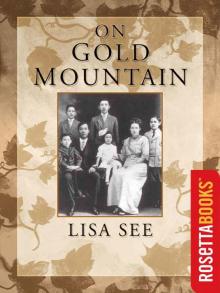 On Gold Mountain: The One-Hundred-Year Odyssey of My Chinese-American Family
On Gold Mountain: The One-Hundred-Year Odyssey of My Chinese-American Family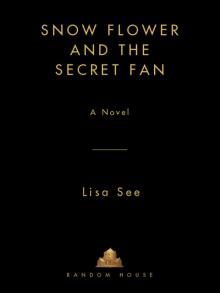 Snow Flower and the Secret Fan
Snow Flower and the Secret Fan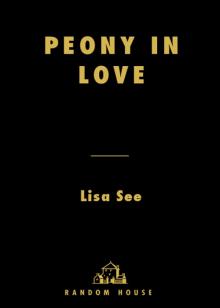 Peony in Love
Peony in Love Flower Net
Flower Net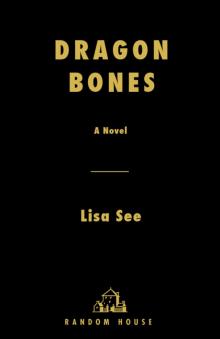 Dragon Bones
Dragon Bones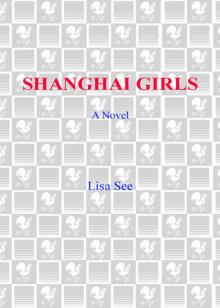 Shanghai Girls
Shanghai Girls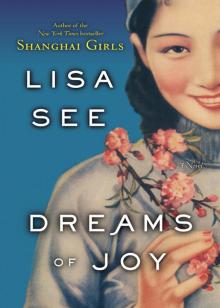 Dreams of Joy
Dreams of Joy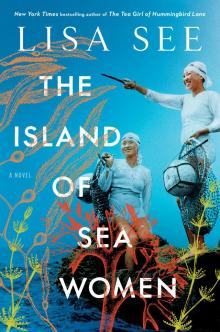 The Island of Sea Women
The Island of Sea Women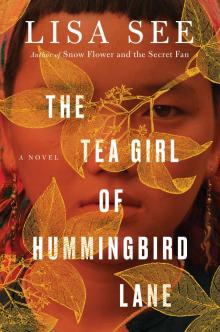 The Tea Girl of Hummingbird Lane
The Tea Girl of Hummingbird Lane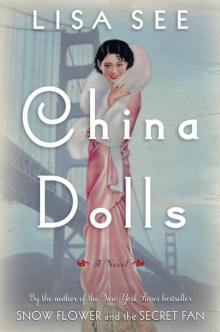 China Dolls
China Dolls The Interior
The Interior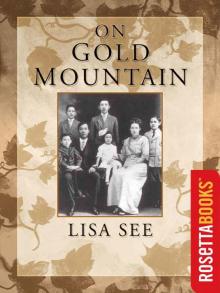 On Gold Mountain
On Gold Mountain